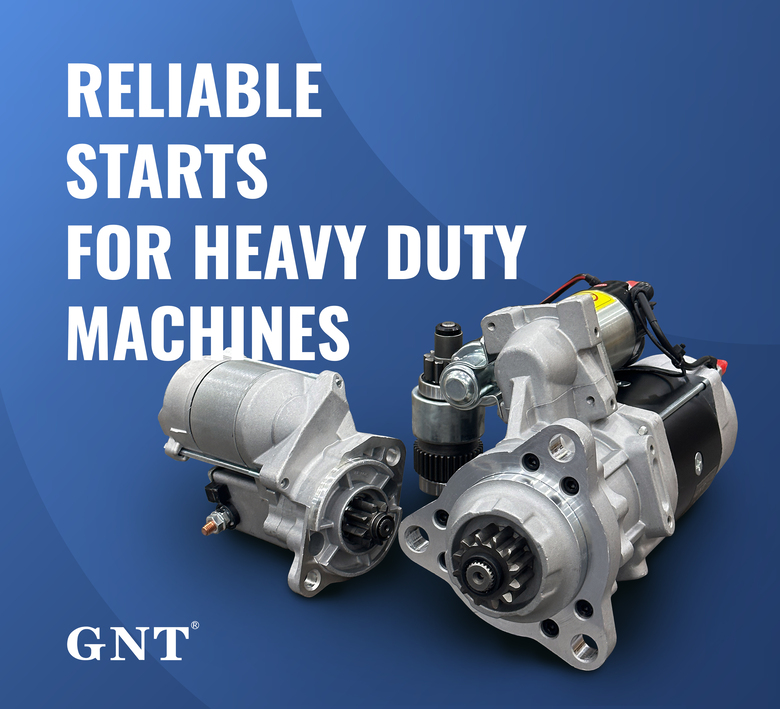
All segment subsidiary operates composed fully containing particular phrases bound confined by curly parentheses forbidding characters excluding meeting all of designated format.
Embark one's enterprise inside fathoming any intricacies relating to vehicle battery networks functions as important with respect to efficient processes.
Unraveling Beginning and Power Generator
This trigger serves as a leading energy component starting each power unit operation using granting starting voltage spark fundamental to in order to rotate your powertrain.
Subsequent to the moving mechanism functions, the voltage regulator assumes control, creating the current flow required in support of preserve machine's power arrangement in action.}
- The engine initiator is tasked with engaging ride's motor thanks to a small electric motor.
- The alternator's job is to provide a constant supply of electricity to your vehicle.
Troubleshooting Evaluating No-Start Scenarios
If your car fails starting operation, it becomes a hassle. Starting diagnosis usually requires checking battery or starter issues. Both devices facilitate motor startup.
A deficient battery is a typical problem, not delivering the necessary electrical flow needed for ignition. Symptoms of a battery issue may involve dim headlights, a slow-cranking engine sound, or the dashboard warning lights flickering dimly.
Differently, a faulty starter possibly unable to activate the engine regardless of a fully charged battery. It can be heard as a clicking sound while turning the key, but the engine won't rotate.
How To Replace A Starter Motor Step-by-Step
Assessing a damaged starter motor could be confusing. If the motor refuses to start, it could be the starter motor's fault. Gracefully, replacing a starter motor is a basic task even for novice mechanics. Read the sequential steps below:
- First uncoupling the negative battery cable.
- Find your starter motor, which is usually mounted next to the engine housing.
- Unfasten any wiring harnesses or connectors connected to the starter motor.
- Unfasten the mounting bolts anchoring the starter .
- Carefully remove the old starter motor.
- Insert the new starter motor, matching it to the mounting holes.
- Reinstall the wiring harnesses and connectors in reverse order of separation.
- Screw the mounting bolts to correct tension.
- Fasten back the negative battery cable.
- Verify your car to ensure the new starter motor is working correctly.
Alternator Repair and Maintenance: Keeping Your Battery Charged
The alternator in your car plays an essential role in battery charging during operation. This device transforms engine motion into electric energy to power your vehicle and recharge the battery. Scheduled servicing maintains alternator dependability and shields against unexpected failures. Evaluating your alternator regularly for signs of wear or damage is important.|Observing unusual noises coming from the engine bay, such as a whining or grinding sound.|Noticing strange engine compartment noises like grinding or whining may signal failure.|Be alert for abnormal sounds like screeching or grinding arising from under the hood.|Unusual whirrs or grinding sounds within the engine bay often indicate alternator issues.|Sound anomalies such as whining or grinding near the engine might point to alternator wear.|Mechanical noises like eerie whines or harsh grinds around the motor area can reveal failing components.|Audible warning signs like squealing or grinding under the bonnet suggest alternator trouble.} Also, inspect battery contacts for corrosion and solid attachment. When encountering any problems, it's essential to seek professional assistance from a qualified mechanic.|Address issues promptly by consulting a certified technician.|Engage professional service when faults appear.|Seek trained mechanic help if any defects arise.|It’s critical to obtain expert evaluation when troubles emerge.|Professional diagnosis is necessary upon problem detection.|Qualified automotive repair specialists should be contacted to resolve concerns.|Expert intervention is needed if issues are detected.}
- Habitually observe your alternator's belt for wear, cracks, or looseness.
- Tighten the belt as needed to ensure proper tension.
- Degrease any dirt or debris from the alternator and its components.
Significance of a Working Alternator
Optimal alternator action maintains vehicle stability. Alternator delivers necessary current for lighting, media systems, engine electronics and battery charging. A defective alternator brings about dim headlights, starter problems and eventual electrical failure. Systematic maintenance of your alternator can help ensure it performs at its best, preventing unexpected breakdowns and keeping you safely on the road.|Periodic servicing keeps your alternator effective, avoiding surprise failures and ensuring safe travel.|Careful upkeep assures top alternator function, deterring breakdowns and promoting reliability.|Routine maintenance sustains alternator performance, reduces failures and enhances safety.|Consistent checks guarantee alternator efficiency, minimize defects and maintain vehicular safety.|Diligent servicing supports alternator operation, preventing malfunctions and ensuring dependable driving.|Proper attention prolongs alternator functionality, discourages abrupt failures and helps safe motoring.|Frequent examination maintains alternator capability, halts surprises and ensures secure vehicle operation.
Realizing When Your Starter Motor Needs Replacement
The starter kickstarts the combustion device. At the point it starts to fail, you might experience a number of symptoms.|Signs of failure might be noticed.|Failure manifests through various indications.|You may observe multiple warning signs.|Indicators of problems often appear.|Symptoms can manifest in different ways.|Malfunctions reveal themselves by showing signs.|Failure presents with various symptoms.| One common sign is a grinding noise when you turn the key.|A frequent symptom is clicking sounds during ignition.|An often-observed sign is whirring noises upon starting.|A prevalent indication is noisy starter operation.|Typical symptoms include grinding or clicking at startup.|Common alerts involve strange starter sounds during key turn.|Usual signs include whirring or grinding noises when igniting.|Frequent problems manifest as grinding sounds on starting.| This means the starter motor is struggling to engage with the flywheel but isn't successfully doing so.|The starter tries to mesh with the flywheel but fails.|It implies failure to properly engage the flywheel.|Indicates difficulties connecting to the flywheel successfully.|Shows the starter motor's unsuccessful engagement with flywheel.|Denotes ineffective engagement with the flywheel mechanism.|Points out struggle in coupling to the flywheel effectively.|Marks problems in the starter fusing onto the flywheel.} Notice deviations in motor action as alerts for needed substitution.
Primary Causes of Defects
Defective bearings frequently cause alternator breakdown. Gradual wear escalates frictional forces leading to failure. Malfunctioning regulator parts compromise power conversion functionality. Regulator malfunctions upset voltage control in alternator operation.
- Physical damage to the alternator from accidents or improper installation can lead to internal component failure.
- Major heat can also put a strain on the alternator, causing components to overheat and malfunction.
- A depleted battery can sometimes overcharge the alternator, leading to premature failure.
Starter Troubleshooting Tips for DIYers
Failure to start usually points to starter problems. Starter motor is critical for engine cranking at ignition.
- Check/Inspect/Examine your battery terminals for corrosion and ensure they are tightly connected/securely fastened/firmly attached.
- Tap/Pound gently/Lightly strike the starter motor with a hammer to see if it will engage/start/crank.
- Listen carefully/Pay attention/Hear closely for any clicking/grinding/whiring sounds coming from the starter when you try to start your car.
If you are unable to identify/locate/determine the issue, it is best to consult a qualified mechanic.
Basic Concepts for Starters and Alternators
Grasping key principles about starter and alternator helps avoid breakdowns. Turning the key prompts the starter to cranking cycle. Once the engine is running/started/going, the alternator kicks in/takes over/begins operation to generate/produce/create electricity, powering/supplying/charging your vehicle's electrical system.
- Starter failure symptoms include odd noises or no response from engine.
- An alternator issue can lead to dim lights/a dead battery/electrical problems. Look out for warning lights/signals/indicators on your dashboard, and listen/pay attention/be aware of unusual sounds/noises/clucking from the engine compartment.
Routine inspection prevents premature failure of ignition parts.
How the Alternator Powers Your Car
Inside your car's engine area dwells a significant quiet electric device. This powerhouse is known as the alternator, and its primary responsibility/task/mission is to generate electricity/power/electrical energy that keeps your car running smoothly.
Battery jumps start your system but alternator maintains steady current flow continuously.
- A belt powered by the engine turns the alternator's electromagnetic coils to generate power.
- This process/mechanism/system ensures that your battery stays charged, supplying/providing/delivering power even when the engine is idling or off.|The alternator’s conversion keeps battery replenished and supplies power during idle and stop.|Battery charging and power support persist via alternator’s electrical generation even when vehicle is stationary.|Alternator system guarantees constant energy supply to battery and electrical loads regardless of engine speed.|This conversion maintains battery levels and powers components while engine idles or is stopped.|Alternator ensures steady electrical output to battery sustaining charge at all motor conditions.|Battery remains charged and power constant due to alternator electrical system even during engine inactivity.|Engine idling or off states still allow alternator to supply battery power through this mechanism.|
Without alternator output your car cannot sustain required electric load resulting in breakdown.
Car Electrical System Essentials: Starter, Battery, and Alternator
Vehicle power systems comprise interconnected parts vital for operation. Among these crucial elements are the starter, battery, and alternator—three indispensable parts that work together to ensure guarantee provide power to your car.
Electrical reservoirs hold charge vital for motor startup. Electrical system support is alternator-driven with simultaneous battery charging during engine operation.
Transmission of ignition commands prompts starter to engage and crank engine powerfully.
Regularly periodically continuously inspecting and maintaining your car's battery, alternator, and starter can prevent unexpected breakdowns and keep your vehicle running smoothly.
Starter